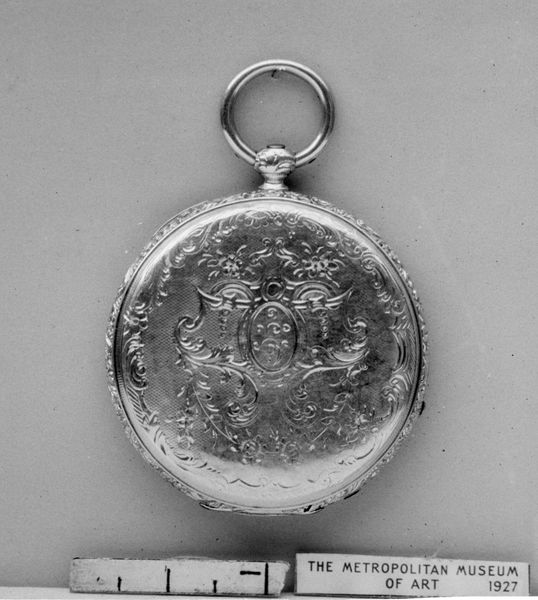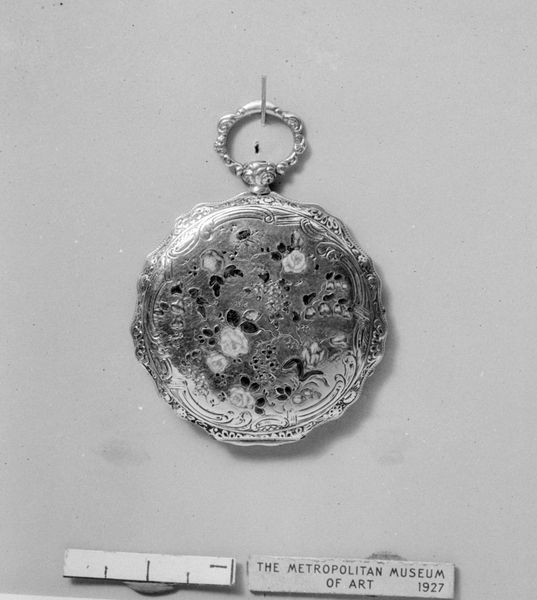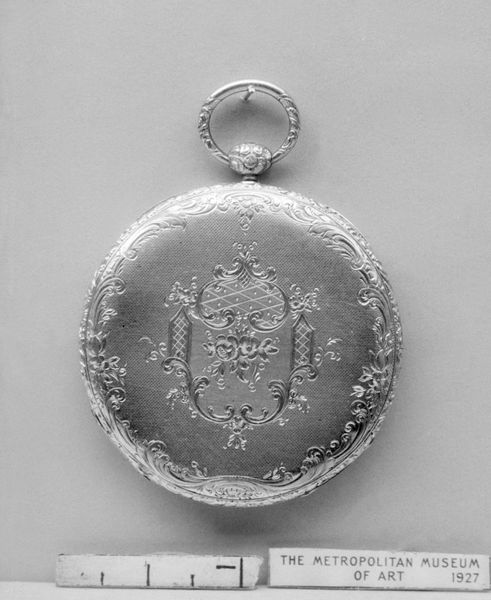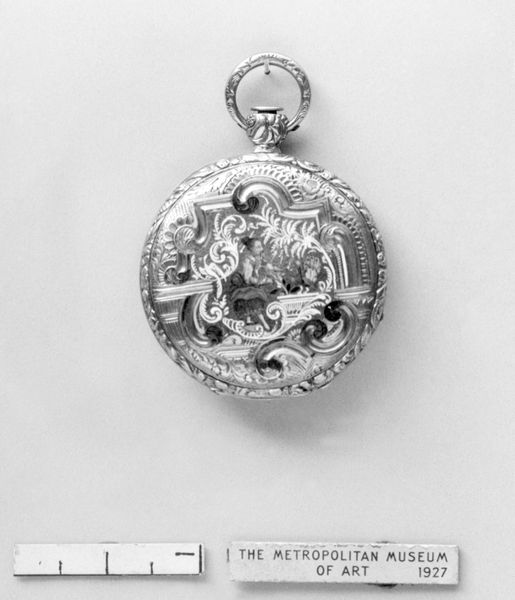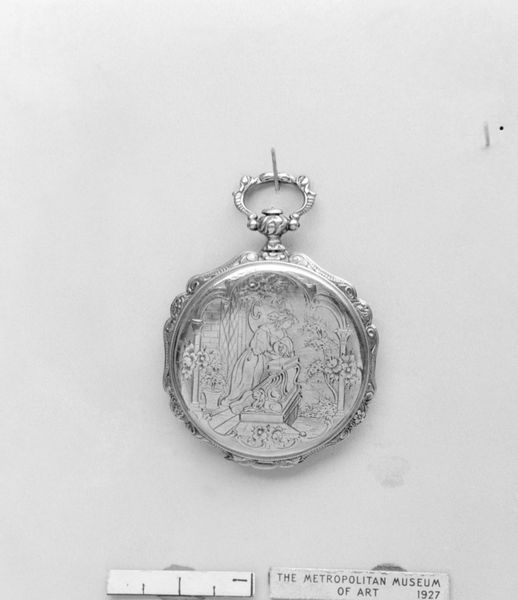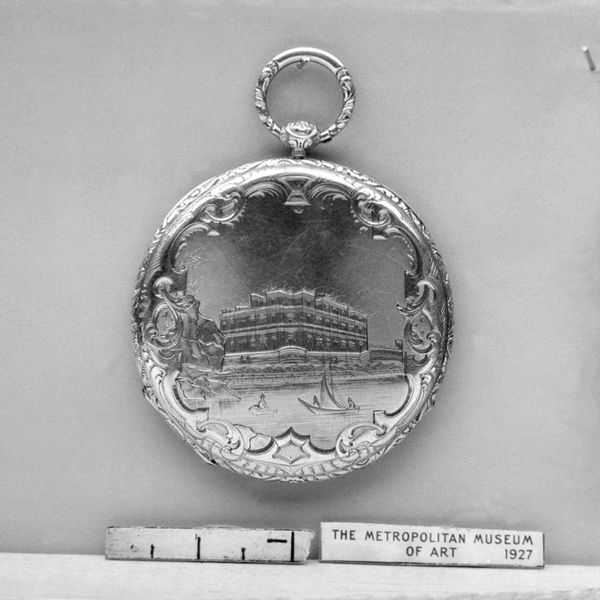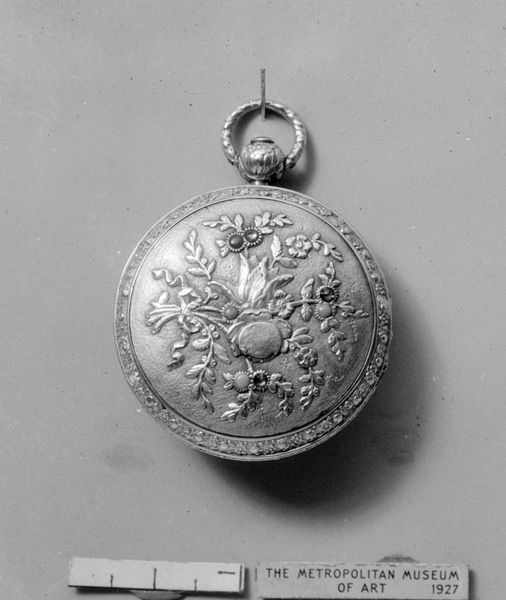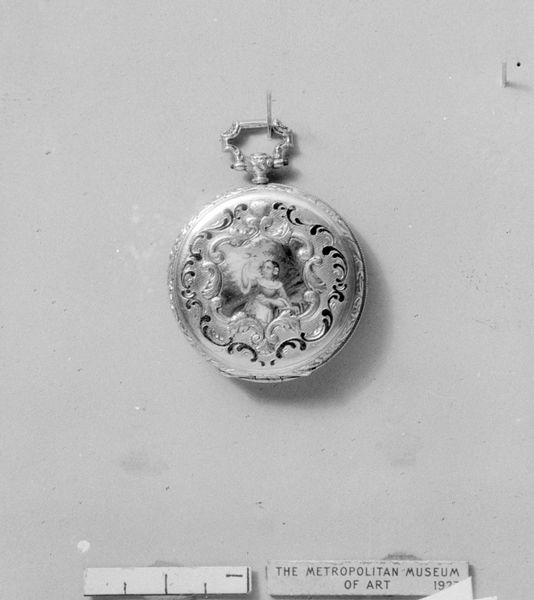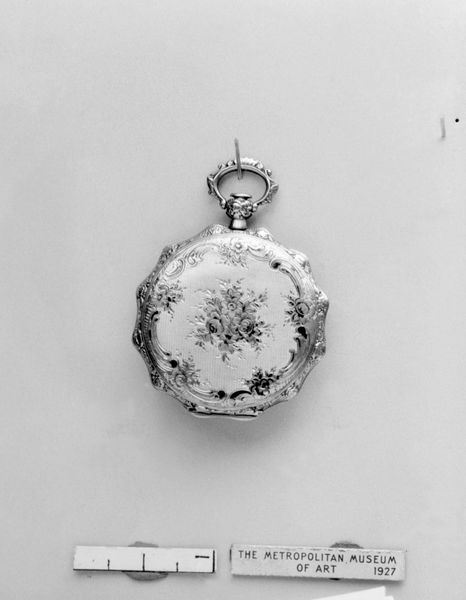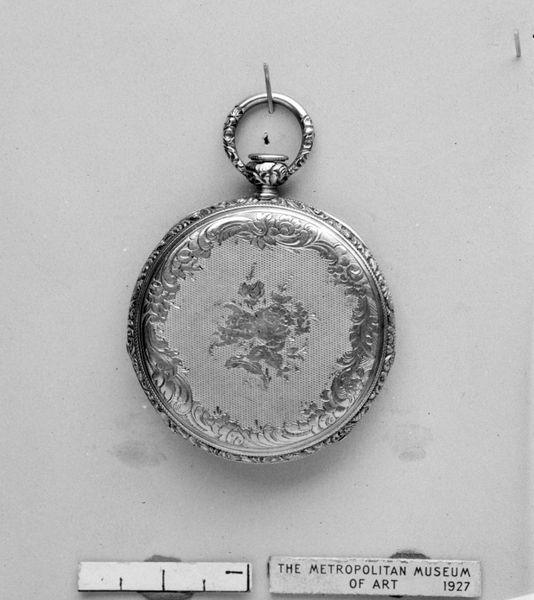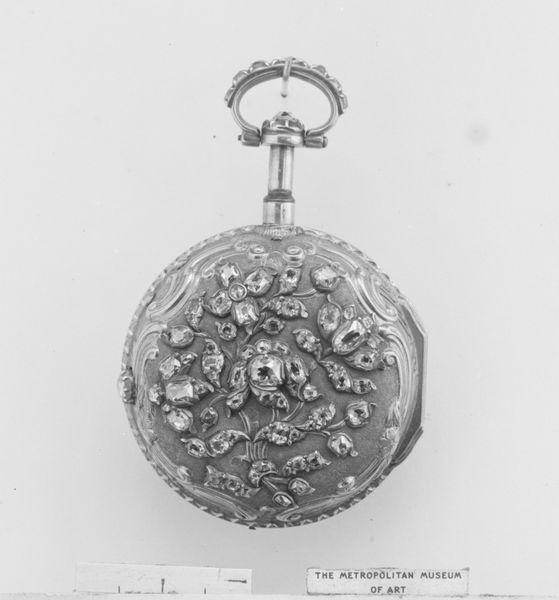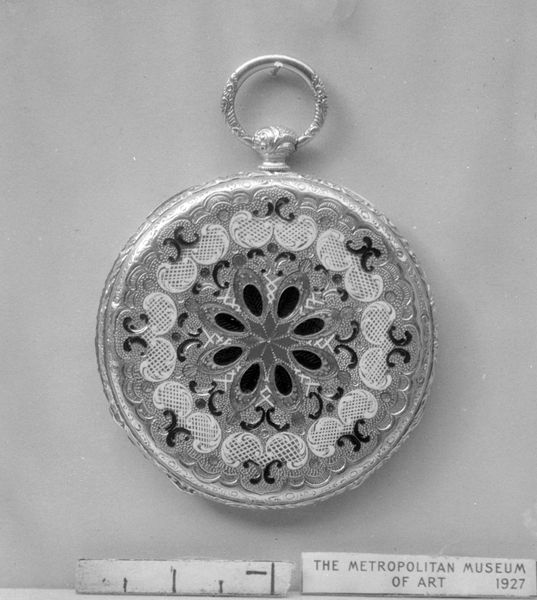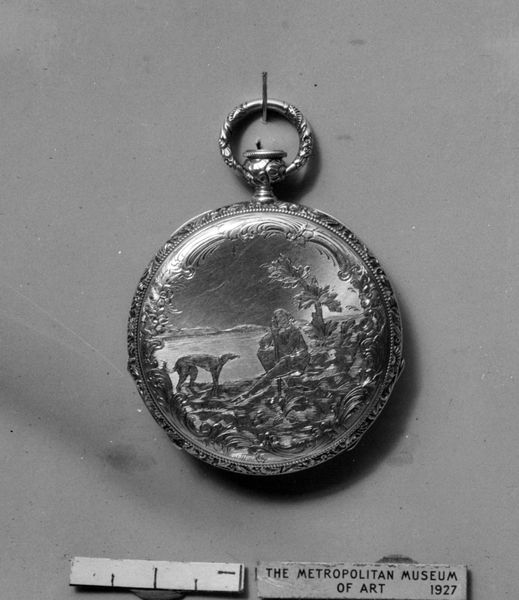
metal
#
portrait
#
metal
#
romanticism
#
decorative-art
Dimensions: Diameter: 1 1/2 in. (3.8 cm)
Copyright: Public Domain
Curator: This ornate pocket watch, now housed at the Metropolitan Museum of Art, was crafted between 1825 and 1845 by the Firm of Rey Frères. Its silvery sheen and intricate decorations give it a unique appeal. Editor: It's beautiful, though a bit overwhelming. The decorative flourishes—all those scrolls and floral patterns—speak to a specific era of craftsmanship. The piece also looks like it’s made from metal and it’s really hard to grasp what it felt like in the hands of the person who owned it! Curator: You’re right. The level of detail speaks volumes about the artistry valued in that time period, and the purpose behind luxury goods. Timekeeping became more accessible but also a signifier of social status. The craftsmanship reflects the growing influence of Romanticism in decorative arts. Editor: How fascinating. I’m also curious about the actual production process. These patterns probably involve skilled metalworkers meticulously chasing and engraving. These aren’t just decorative flourishes. Labor, craft, material are completely linked here. I want to examine the silversmith’s hands. Curator: Indeed. And beyond the manual skill, one should also see the impact of a booming horological market. This timepiece would've been fashionable but its aesthetic and mechanical sophistication mirror the growth of industrialized societies in the 19th century. This object transcends mere utility. Editor: So much is implied in its tiny scale! The pocket watch becomes a portable status symbol in that burgeoning world. These watches represent something, especially because objects always embody social context and manufacturing capability of their time! Curator: Precisely. And analyzing them can expose social dynamics, aesthetic sensibilities and technological advancements. Next time you look at something similar ask yourself about access, cultural influence, as well as class and its performativity. Editor: Exactly. Beyond aesthetic appeal, think also about the laborers involved. How does valuing craftsmanship affect the perception of everyday life? Reflecting about what materials are involved always tells us a little story. I wonder if the laborers involved even saw the watch like that. Curator: I’m so glad you focused on the economic factors and conditions involved! Considering craft within socio-economic structures really enhances our experience of such object. Editor: Thank you! Examining labor transforms how we understand its appeal!
Comments
No comments
Be the first to comment and join the conversation on the ultimate creative platform.
